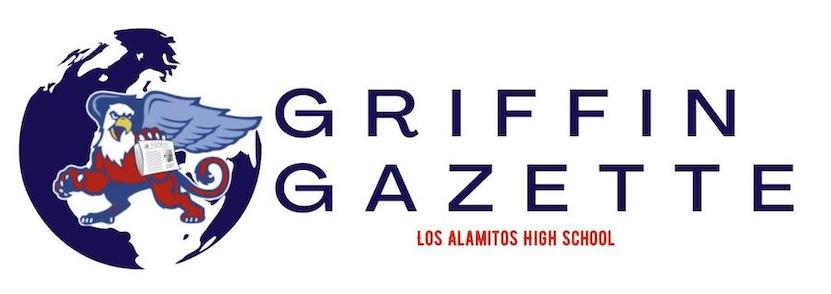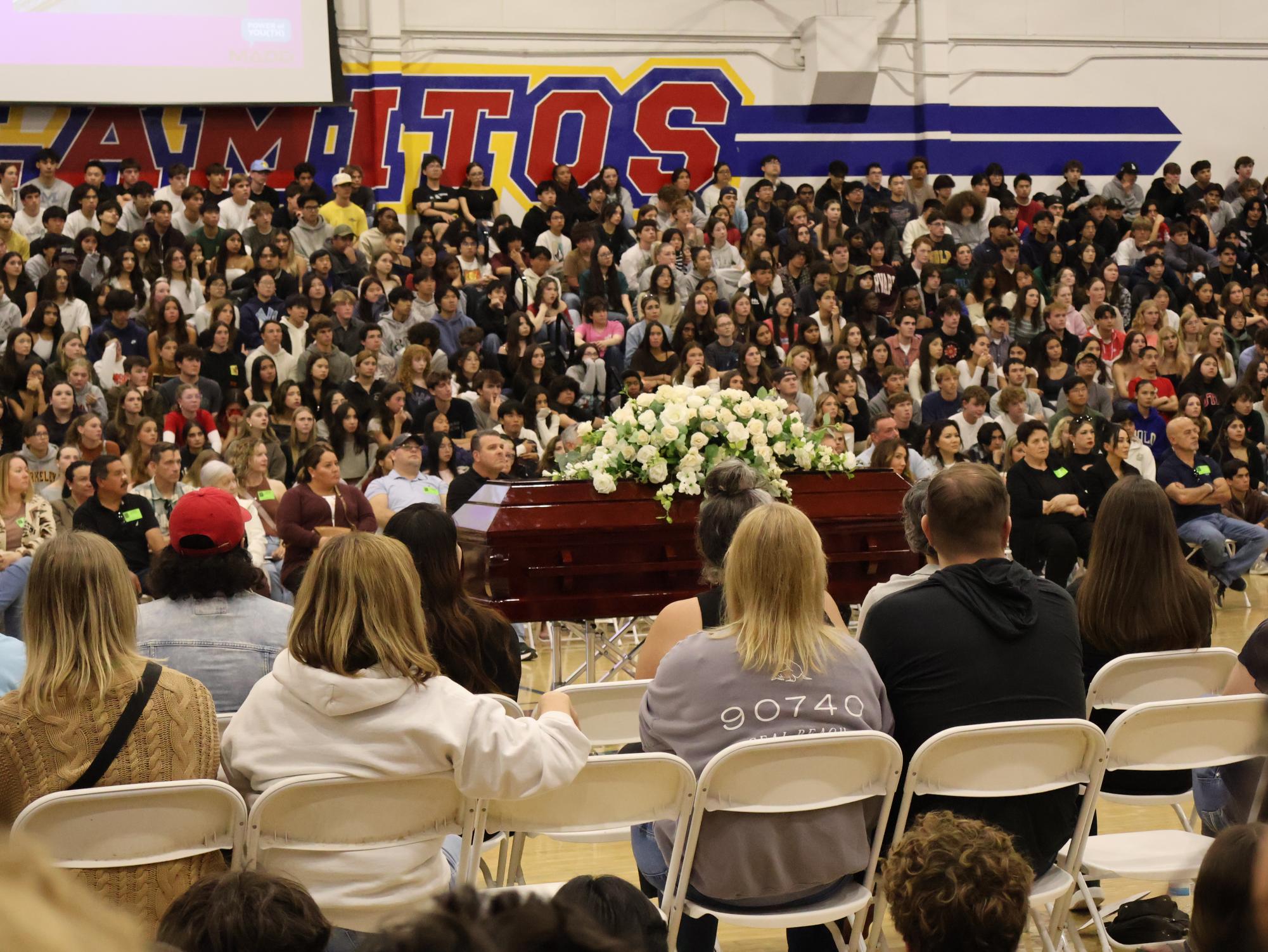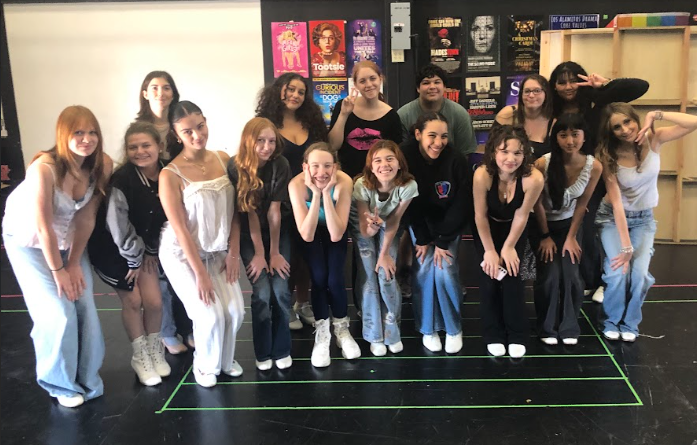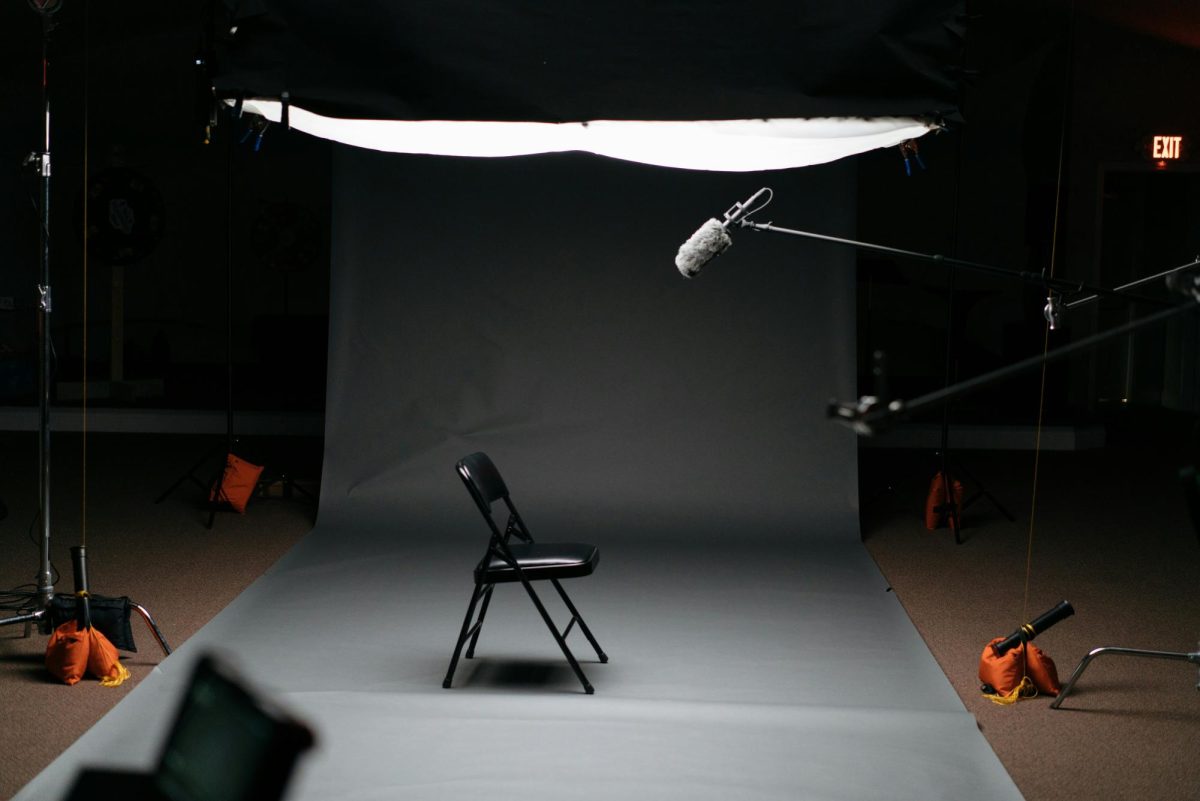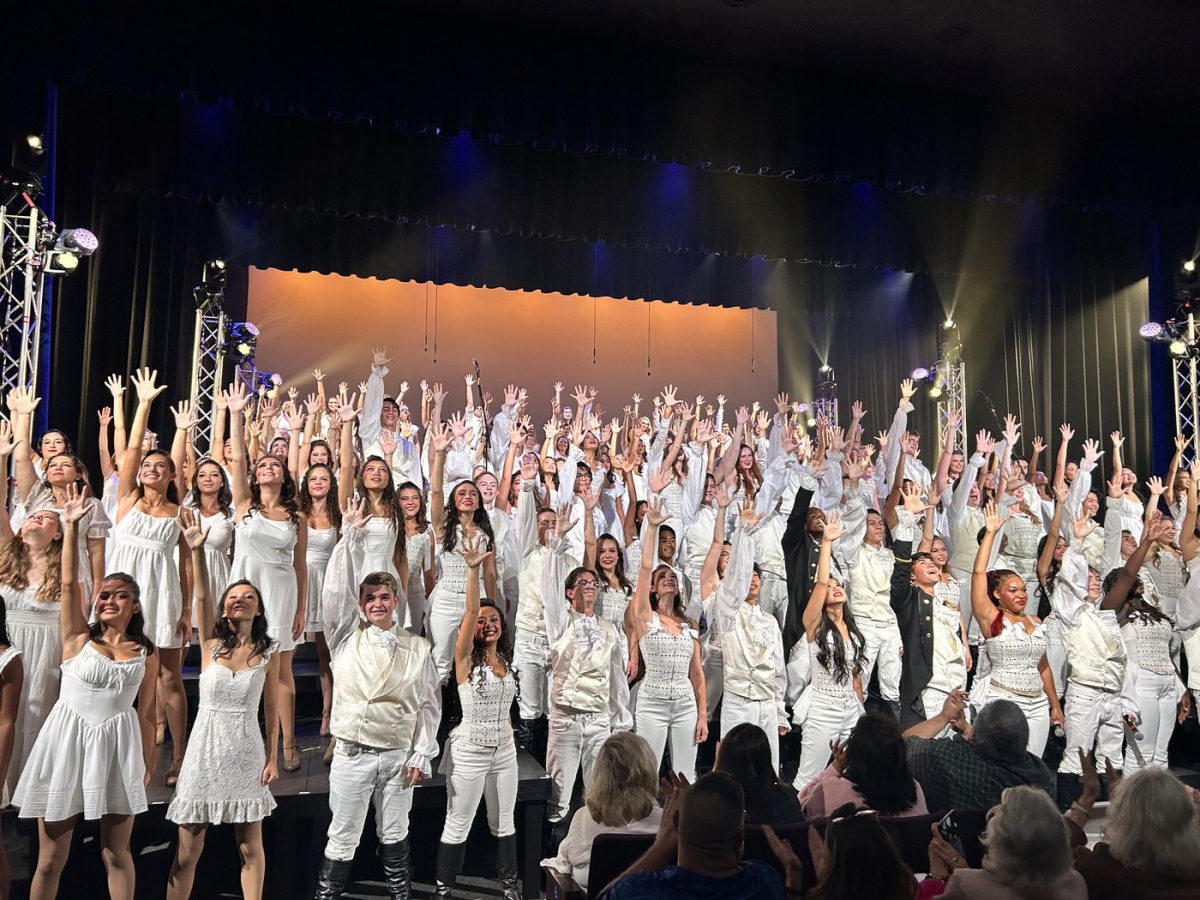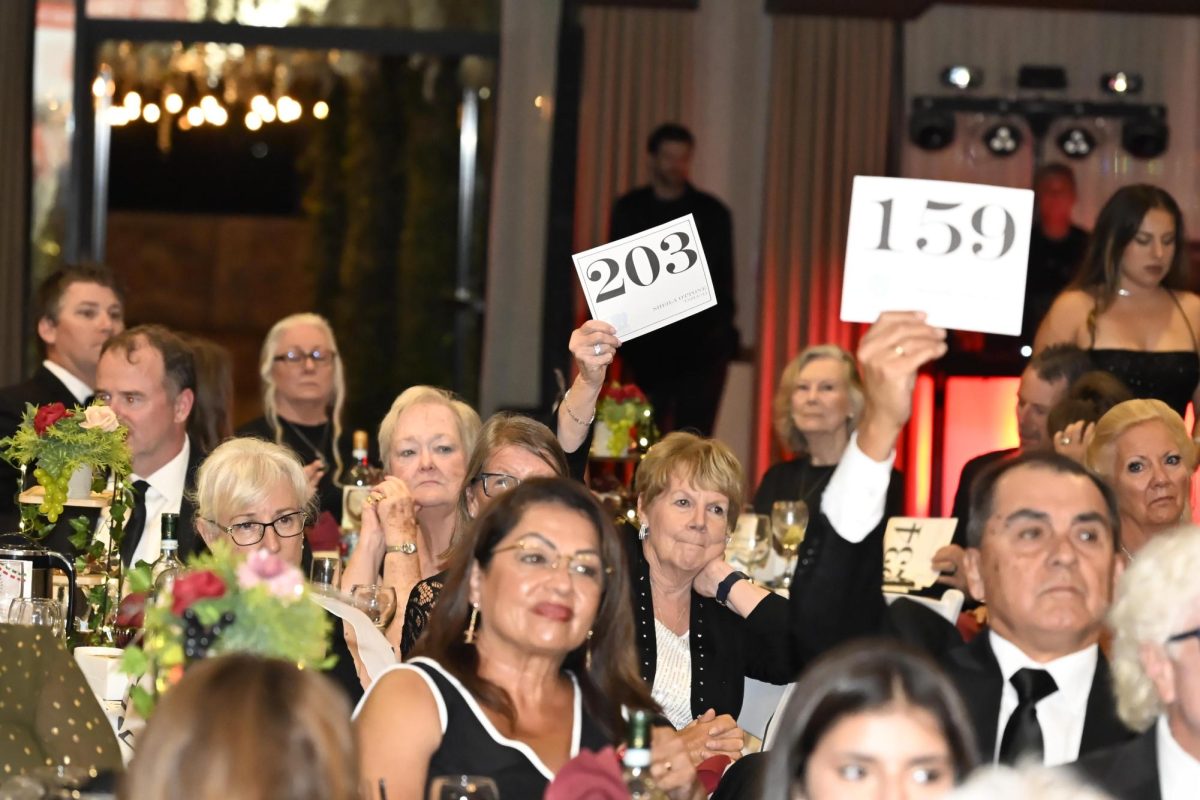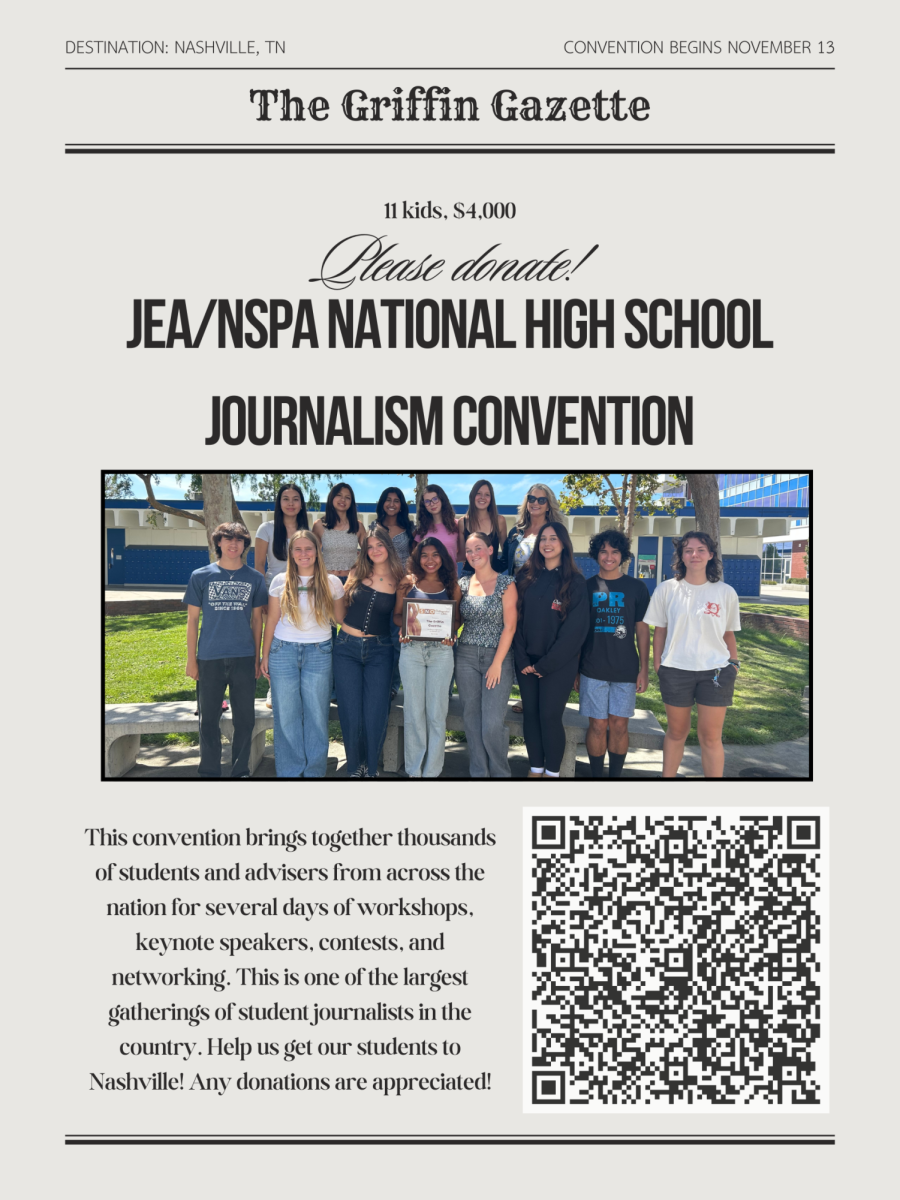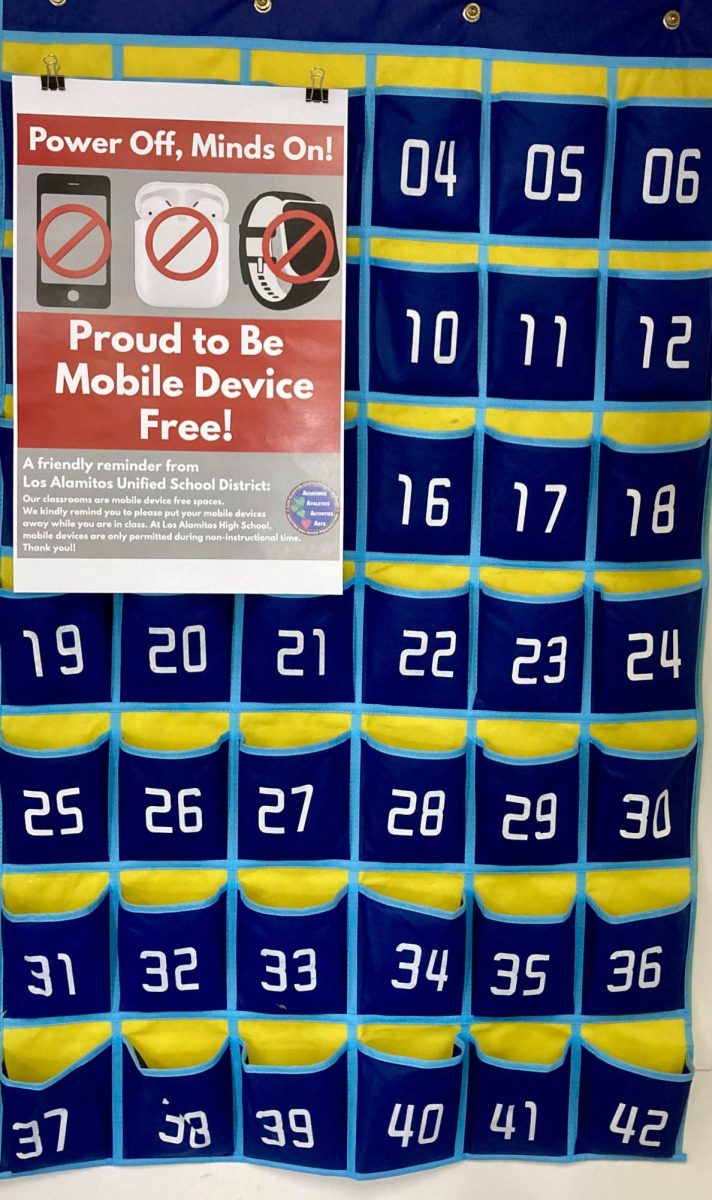LOS ALAMITOS, Calif. – On April 4, students gathered in the gym, heartbroken by the “deaths” of 28 students at Los Alamitos High School and in curious anticipation of their eulogies.
Students attended two assemblies– one for underclassmen and one for upperclassmen, each with different programs memorializing real and pretend deaths from drunk driving. Juniors’ and seniors’ experiences notably included a mock funeral, with a white coffin in the center of the gym floor surrounded by the “dead” students’ families.
Mrs. Vienna, the LAHS assistant principal, opened the assembly with the phrase preceding every death announcement the day prior: “Every 15 minutes, someone in the United States dies in an alcohol-related incident”. She reminded students to respect this assembly that honors those who were affected and shows awareness of drunk driving.
After, Focus Studios’ PSA short film debuted, a key aspect of student participation at each Every 15 Minutes event. Focus Studios started conceptualizing the film as early as November 2024, making April’s results all the more satisfying and realistic.
“Until [the film] premiered at the assembly, we didn’t know if we’d worked or not,” said senior Joe Burke, the piece’s writer, composer, producer and post-production supervisor. The captivated eyes and silent voices of students as the film played confirmed that it had, and then some.
For Focus Studios, the film was a triumph due to its emotional connection to preventing drunk driving. Creating and filming the crash scene, which Burke calls the most universally lauded part of the movie, revealed how crucial the entire piece would be, especially with the process of composing the somber background music and hearing the LAHS Orchestra play it.
“I think that was the first time on the project that we really saw the vision of sadness. That we really saw the emotion come out from something that we worked on,” Burke said.
After the video played, multiple speakers spoke to the students, with their messages built upon the film’s with stories of their own. The list began with Louis Deliz, a volunteer from Mothers Against Drunk Driving. Deliz suffered first-hand in an encounter with a 19-year-old intoxicated driver, in which she collided with him on his bike. Choosing to drive away to avoid trouble, the girl tore off Deliz’s jaw and crushed his esophagus and trachea, a painful and trying incident the orator was lucky to have survived. Now, he volunteers with MADD to educate others about the effects of drunk driving.
“I wanted to see about using my story to help people,” Deliz said. “I didn’t know where to do it, so I went into motivational speaking, and then luckily found the MADD office and then we started working with them. After a long time of mental healing, personal growth, and some physical growth, I started joining up with them and volunteering.”
Following Deliz, Maddie Shafer’s father delivered a tearful eulogy dedicated to his beloved daughter, memorializing her “spicy personality” and her loving heart. Several living dead students then read letters they wrote to their parents, creative pieces about their last moments used to condemn drunk drivers. One piece was written in rhyme, an emotional poem that closed the speaker’s list and left the student audience in tears. All the while, living dead students remained on the outskirts of the scene, having empathetic experiences all their own.
“There was this moment where I looked at the clothes I was wearing for the simulation and thought, ‘What if this was it? What if this was the outfit I’d be remembered in?’ It shook me,” Era Berani, sophomore participant, said. For her, and other living dead, their participation was spurred because of a personal connection.
“I’ve lost a friend to a drunk driving accident before. So when I was standing there, playing the role of someone who had “died” in a crash, it wasn’t just pretend. It hit me like a wave,” she said.
At lunch after the assembly, it was finally time for living dead students to reunite with their loved ones in a notoriously powerful display of love and emotion. Senior Addie Schumacher was anxious to reunite with friend Sarah Roudabush.
“One of our mutual friends brought her in and we just hugged and cried for a good two minutes,” she said.
Administrators were proud of the living dead volunteers for helping change students’ perceptions of drunk driving.
“In my 25 years of working in high schools, this program remains one of the most impactful I’ve encountered. Countless lives have been saved because of the message and learning that unfolds during these two days. I couldn’t be more proud of our students, staff, and community, and of the incredible work that goes into creating such a powerful and moving experience,” Mrs. Kraus, the principal at LAHS, said.
